- Home
- Bobby Akart
36 Hours: A Post-Apocalyptic EMP Survival Fiction Series
36 Hours: A Post-Apocalyptic EMP Survival Fiction Series Read online
Thank you for downloading 36 Hours, Book One of The Blackout Series,
by Author Bobby Akart
For free advance reading copies, updates on new releases, special offers, and bonus content
Click Here To Sign Up
or visit me online at
BobbyAkart.com
Begin Reading
Other Works by Bestselling Author Bobby Akart
The Blackout Series
36 Hours
Zero Hour
Turning Point
The Boston Brahmin Series
The Loyal Nine
Cyber Attack
Martial Law
False Flag
The Mechanics
Choose Freedom
The Prepping for Tomorrow Series
Cyber Warfare
EMP: Electromagnetic Pulse
Economic Collapse
36 Hours
The Blackout Series, Book One
A novel by
Bobby Akart
Contents
Dedications
Acknowledgements
About the Author, Bobby Akart
About The Blackout Series
Epigraph
PROLOGUE
Thirty-Six Hours Earlier Chapter 1
Chapter 2
Chapter 3
Chapter 4
Chapter 5
Chapter 6
Chapter 7
Chapter 8
Chapter 9
Chapter 10
Chapter 11
Chapter 12
Chapter 13
Chapter 14
Chapter 15
Chapter 16
Chapter 17
Chapter 18
Chapter 19
Chapter 20
Chapter 21
Chapter 22
Chapter 23
Chapter 24
Chapter 25
Chapter 26
Chapter 27
Chapter 28
Chapter 29
Chapter 30
Chapter 31
Chapter 32
Chapter 33
Chapter 34
Chapter 35
Chapter 36
Chapter 37
Chapter 38
Chapter 39
Chapter 40
Chapter 41
Copyright Information
APPENDIX A
AN EXCERPT FROM EMP: ELECTROMAGNETIC PULSE
Chapter One Let’s Get Technical
Chapter Two What are the characteristics of a nuclear EMP?
Chapter Three What are the differences between a Nuclear EMP, a CME, and an RF Weapon?
APPENDIX B Space Weather: A Primer
APPENDIX C NATIONAL SPACE WEATHER STRATEGY
APPENDIX D PREPPER’S CHECKLIST
Dedications
To the love of my life, thank you for making the sacrifices necessary so I may pursue this dream.
To the Princesses of the Palace, my little marauders in training, you have no idea how much happiness you bring to your Mommy and me.
To my fellow preppers—never be ashamed of adopting a preparedness lifestyle.
Acknowledgements
Writing a book that is both informative and entertaining requires a tremendous team effort. Writing is the easy part. For their efforts in making The Blackout Series a reality, I would like to thank Hristo Argirov Kovatliev for his incredible cover art, Pauline Nolet and Sabrina Jean for making my important work reader-friendly, Stef Mcdaid for making this manuscript decipherable on so many formats, and The Team—whose advice, friendship and attention to detail is priceless.
The Blackout Series could not have been written without the tireless counsel and direction from those individuals who shall remain nameless at the Space Weather Prediction Center in Boulder, Colorado and at the Atacama Large Millimeter Array (ALMA) in Chile. Thank you for providing me a portal into your observations and data.
Lastly, a huge thank you to Dr. Tamitha Skov, a friend and social media icon, who is a research scientist at The Aerospace Corporation in Southern California. With her PHD in Geophysics and Space Plasma Physics, she has become a vital resource for amateur astronomers and aurora watchers around the world. Without her insight, The Blackout Series could not have been written. Visit her website at http://www.SpaceWeatherWoman.com.
Thank you!
About the Author, Bobby Akart
A five-time Amazon Top 100 Author and author of seven #1 bestsellers, in both fiction and non-fiction genres. Bobby Akart has provided his readers a diverse range of topics that are both informative and entertaining. His attention to detail and impeccable research has allowed him to write bestselling books in several fiction and nonfiction genres.
Born and raised in Tennessee, Bobby received his bachelor's degree with a dual major in economics and political science. He not only understands how the economy works, but the profound effect politics has on the economy as well. After completing his undergraduate degree at Tennessee in three years, he entered the dual-degree program, obtaining a Juris Doctor combined with an MBA—master of business administration—at the age of twenty-three.
His education perfectly suited him for his legal career in banking, trusts, and investment banking. As his career flourished, business opportunities arose, including the operation of restaurants and the development of real estate. But after meeting and marrying the love of his life, they left the corporate world and developed online businesses.
A life-changing event led them to Muddy Pond, Tennessee, where he and his wife Dani lead a self-sustainable, preparedness lifestyle. Bobby and his wife are unabashed preppers and share their expert knowledge of prepping via their website www.FreedomPreppers.com.
Bobby lives in the backwoods of the Cumberland Plateau with his wife, and their two English bulldogs, aka the Princesses of the Palace.
SIGN UP FOR EMAIL UPDATES and receive free advance reading copies, updates on new releases, special offers, and bonus content. You can contact Bobby directly by email ([email protected]) or through his website www.BobbyAkart.com
About The Blackout Series
WHAT WOULD YOU DO
if a voice was screaming in your head – GET READY . . .
for a catastrophic event of epic proportions . . .
with no idea where to start . . .
or how, or when?
This is a true story, it just hasn't happened yet.
A new dystopian, post-apocalyptic fiction series from six-time best-selling author Bobby Akart (The Boston Brahmin series and the Prepping for Tomorrow series).
The characters depicted in The Blackout Series are fictional. The events, however, are based upon fact.
This is not the story of preppers with stockpiles of food, weapons, and a hidden bunker. This is the story of Colton Ryman, his stay-at-home wife, Madison, and their teenage daughter, Alex. In 36 Hours, the Ryman family and the rest of the world will be thrust into the darkness of a post-apocalyptic world.
A catastrophic solar flare, an EMP—a threat from above to America's soft underbelly below—is hurtling toward our planet.
The Rymans have never heard of preppers and have no concept of what prepping entails. But they're learning, while they run out of time. Their faith will be tested, their freedom will be threatened, but their family will survive.
An EMP, naturally generated from our sun in the form of a solar flare, has happened before, and it will happen again, in only 36 Hours.
This is a story about how our sun, the planet's source of life, can also devastate our modern world. It’s a story about panic, chaos,
and the final straws that shattered an already thin veneer of civility. It is a warning to us all ...
never underestimate the depravity of man.
What would you do when the clock strikes zero?
Midnight is forever.
Note: This book does not contain strong language. It is intended to entertain and inform audiences of all ages, including teen and young adults. Although some scenes depict the realistic threat our nation faces from a devastating solar flare, and the societal collapse which will result in the aftermath, it does not contain graphic scenes typical of other books in the post-apocalyptic genre.
Epigraph
Here comes the sun. Here comes the sun, and I say, it’s all right.
~ the quiet Beatle
*****
Civilization is hideously fragile.
There’s not much between us & the horrors underneath, just about a coat of varnish.
~ CP Snow
*****
TEOTWAWKI—The End of The World As We Know It
It is not, however, the end of the world.
*****
By failing to prepare, you are preparing to fail.
~ Benjamin Franklin
*****
I would rather be wrong and alive, than oblivious and dead.
~ Bobby Akart
*****
Because you never know when the day before
is the day before.
Prepare for tomorrow!
PROLOGUE
10:00 p.m., September 8, Thursday
MISSION CONTROL CENTER
Houston, Texas
From the ground, space looks like a pristine void—fascinating, miraculous, serene. But the Earth’s orbit is actually a very crowded place inhabited by twenty-four hundred satellites and many thousands of pieces of space junk.
The altitude above the planet containing the vast majority of this debris, and some of mankind’s most used spacecraft, is between one hundred miles and twelve hundred miles above the Earth’s surface. This is known as the low Earth orbit, and it’s home to the International Space Station.
In 2009, the first accidental collision between two low Earth orbiting satellites occurred when the two-thousand-pound Russian-made Kosmos-2251 collided with the slightly smaller U.S.-built Iridium-33 communications satellite launched on behalf of the satellite telephone provider.
As was customary, after the Kosmos-2251 had been deactivated, it was left in Earth’s orbit as space debris. On February tenth of that year, the Iridium-33 sped through its orbit five hundred miles above Earth at approximately twenty-six thousand miles per hour.
NASA estimated the collision, seen by amateur astronomers from Japan to Europe, created over a thousand pieces of debris. Russian and Chinese scientists immediately warned all relevant space agencies worldwide that the debris would pose a threat to satellites and the International Space Station.
NASA assembled its team and, in coordination with the ISS crew, deftly executed a collision-avoidance maneuver to avoid a large piece of the orbital debris caused by the space pileup. Fortunately, the Christopher C. Kraft Jr. Mission Control Center, or MCC, in Houston was fully operational at the time. Tracking data on the space debris was readily available, and predictions were performed, which led to a fairly accurate probability for a mid-space collision.
The 2009 near-miss was not the only time NASA orchestrated collision-avoidance maneuvers with the ISS. On one occasion, the threat of a crash in orbit was so great that NASA ordered six members of the ISS crew to enter Russian Soyuz transport ships for a possible evacuation.
As a result of these events, protocols and procedures were established. Space debris was monitored and warnings were shared, all in cooperation with the major space agencies around the world—except one.
China had lost control of its Tiangong-1 space station. Their Manned Space Engineering Office had not made an announcement of the mission failure for fear the Beijing government’s alternate purpose—carrying a nuclear payload, would be discovered. The Chinese military developed an EMP warhead capable of being launched from space. It was the first of its kind and was known within the People’s Liberation Army as The Great Equalizer. Now, the crowning achievement in Chinese military history was hurtling out of control in low Earth orbit.
Weighing nearly twenty thousand pounds and soaring around Earth at a speed of seventeen thousand miles per hour, the Tiangong-1 became an immediate danger to every spacecraft in its path. The intense geomagnetic storm engulfing Earth impacted orbiting satellites and the modular space stations first. NASA’s ability to track unresponsive space debris was hampered. They had to rely upon sight visuals and data transmitted from the ISS.
ISS: “We copy, Houston. We are feeling the effects of the solar wind at this point. I have to say the aurora is stunning. The dancing lights must be putting on quite a spectacular show down there. I can tell you I’ve never seen anything like it.”
MCC: “Roger that, Commander. I don’t want to lead you astray, but data analysis and monitoring on our end is fragmentary at best. This G5 storm is unprecedented. We’re not your eyes and ears on the ground that you’re accustomed to.”
ISS: “Copy, Houston. Our Navigation and Controls Systems appear to be fully operational. All near-object warning systems appear to be functioning and quiet at this time. The systems engineer is monitoring the Data Display System. The remainder of the crew is disbursed to provide visuals.”
MCC: “Roger, Commander. As conditions change, will advise. Still no official word from the Chinese.”
ISS: “Copy, Houston. My Russian counterpart had a few choice words for his neighbor to the south that I couldn’t repeat if I tried. Suffice it to say they sounded harsh.”
MCC: “Roger. Those sentiments have been expressed throughout the MCC. Stand by, Commander.”
11:00 p.m., September 8
INTERNATIONAL SPACE STATION
254 Miles Above Earth
If you think of the Sun as a giant bubble of boiling water, then the solar wind would be the wisps of steam that float away from the surface. The Sun is always simmering, sending off clouds, or tendrils, of high-energy puffs of particles called coronal mass ejections. Before these high-energy winds strike Earth at roughly nine hundred miles per hour, they smash into Earth-orbiting satellites first.
Although satellites have built-in protections against normal levels of solar wind, intense bursts like the ones being experienced on this night can overwhelm these protections and destroy onboard electronic systems.
These solar wind particles increased the aurora phenomena in Earth’s atmosphere. The crew of the ISS was busy monitoring the data available to them, but they couldn’t resist the opportunity to snap a few pictures to be posted later.
As the solar wind hit Earth’s magnetic field, it dissipated and transferred its energy to the ions in the atmosphere. This resulted in the magnificent view enjoyed by the ISS team. It also resulted in the ions being rerouted into the upper layers of the ionosphere—disrupting the operations of the Global Positioning System.
While the crew of the four-hundred-and-fifty-ton ISS was distracted by the beauty of the aurora, their onboard navigation system adjusted their orbit based upon false readings from the GPS. The new altitude was consistent with another space station no longer within the control of man nor computer—the Tiandong-1.
The collision between the two space stations resembled an eighteen-wheel gasoline tanker running over a parked Volkswagen at eighty miles an hour—the VW would get the worst of the impact, but both would suffer serious damage. In this accident, the crash was magnified by the payload of the Tiandong-1.
The nuclear explosion, and the incredible inferno produced by it, fused the two spacecraft into an asteroid-sized hunk of steel. Earth’s weakened atmosphere as a result of the geomagnetic storm opened a portal for the electromagnetic radiation and the remains of the two space stations.
The timing of the conflagration couldn’t have been worse.
11:03 p.m., September 8
The Pacific Ocean
Returning a spacecraft to Earth is tricky business primarily because of the intense heat produced. A miscalculation can have a profound impact on the debris. If the re-entry is uncontrolled, as space debris enters Earth’s atmosphere, it explodes into molten metal. The size and speed depends on the conditions in the atmosphere at the time.
Satellites, and their rocket boosters, do fall from space, re-entering the atmosphere. Earth’s gravity field, atmospheric drag, solar conditions, and even ocean tides caused by the gravitational attraction of the moon all impact the drop from orbit and the resulting descent.
Most times, the satellites break up into thousands of pieces and land harmlessly in one of the planet’s vast oceans. But in times of intense geomagnetic storms, Earth’s magnetosphere is weakened, which in turn allows solar wind and particles to slam into the planet.
Likewise, space debris, after it has become a heavier mass of metal, can travel at a greater velocity towards Earth’s surface. A major impact event releases the energy of several nuclear weapons detonating simultaneously. For example, a three-mile wide asteroid could result in an extinction-level event.
After the collision, the resulting forty-four thousand metric tonnes of molten metal was two hundred feet wide as it screamed through the sky at nearly forty thousand miles per hour. Like most satellite remnants from the past, the remains of the ISS and Tiangong soared toward one of the world’s vast oceans. It would make impact halfway between Hawaii and the coast of Baja, California.
Later, after many, many years, it was estimated that the total kinetic energy at the time of impact was equivalent to two thousand kilotons of TNT, over one hundred times more energy than was released from the atomic bomb detonated at Hiroshima. Ordinarily, the bulk of the object’s energy would be absorbed by the atmosphere.

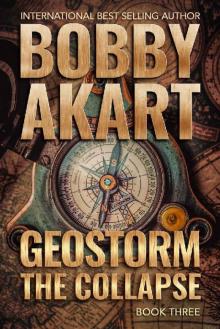 Geostorm The Collapse: A Post Apocalyptic EMP Survival Thriller (The Geostorm Series Book 3)
Geostorm The Collapse: A Post Apocalyptic EMP Survival Thriller (The Geostorm Series Book 3)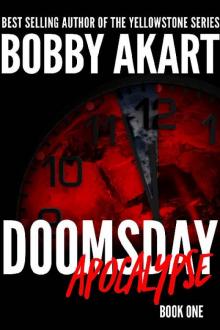 Doomsday Apocalypse
Doomsday Apocalypse Nuclear Winter Desolation: Post Apocalyptic Survival Thriller (Nuclear Winter Series Book 5)
Nuclear Winter Desolation: Post Apocalyptic Survival Thriller (Nuclear Winter Series Book 5)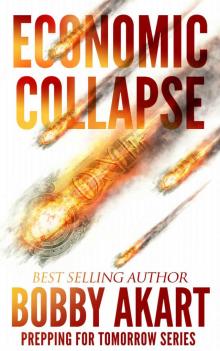 Economic Collapse (Prepping for Tomorrow Book 2)
Economic Collapse (Prepping for Tomorrow Book 2) Nuclear Winter Armageddon
Nuclear Winter Armageddon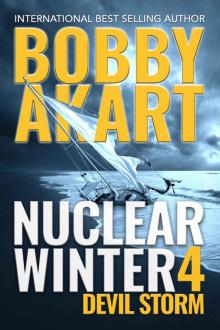 Nuclear Winter Devil Storm
Nuclear Winter Devil Storm Virus Hunters 3: A Medical Thriller
Virus Hunters 3: A Medical Thriller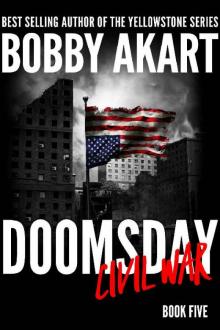 Doomsday Civil War: A Post-Apocalyptic Survival Thriller (The Doomsday Series Book 5)
Doomsday Civil War: A Post-Apocalyptic Survival Thriller (The Doomsday Series Book 5)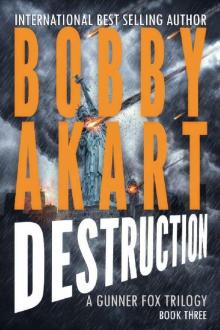 Asteroid Destruction
Asteroid Destruction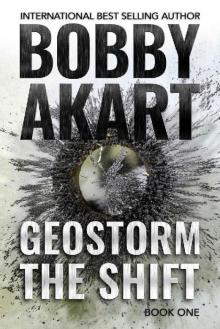 Geostorm the Shift
Geostorm the Shift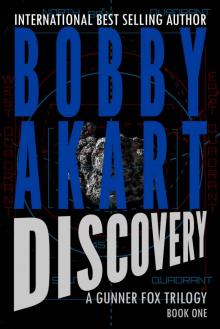 Asteroid Discovery
Asteroid Discovery Virus Hunters 2: A Medical Thriller
Virus Hunters 2: A Medical Thriller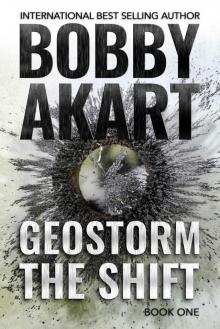 Geostorm The Shift: A Post-Apocalyptic EMP Survival Thriller (The Geostorm Series Book 1)
Geostorm The Shift: A Post-Apocalyptic EMP Survival Thriller (The Geostorm Series Book 1)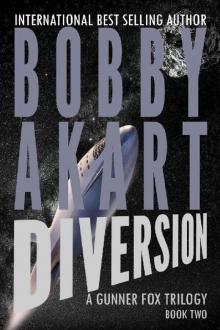 Asteroid Diversion
Asteroid Diversion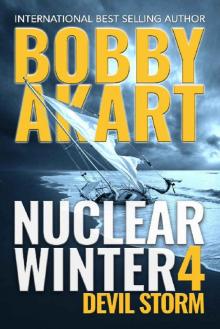 Nuclear Winter Devil Storm: Post Apocalyptic Survival Thriller (Nuclear Winter Series Book 4)
Nuclear Winter Devil Storm: Post Apocalyptic Survival Thriller (Nuclear Winter Series Book 4) Geostorm The Pulse: A Post Apocalyptic EMP Survival Thriller (The Geostorm Series Book 2)
Geostorm The Pulse: A Post Apocalyptic EMP Survival Thriller (The Geostorm Series Book 2)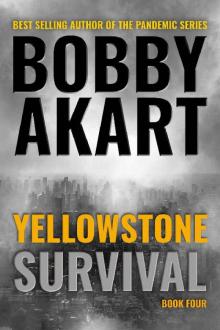 Yellowstone: Survival: A Post-Apocalyptic Survival Thriller (The Yellowstone Series Book 4)
Yellowstone: Survival: A Post-Apocalyptic Survival Thriller (The Yellowstone Series Book 4)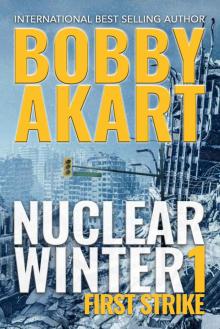 Nuclear Winter First Strike: Post-Apocalyptic Survival Thriller
Nuclear Winter First Strike: Post-Apocalyptic Survival Thriller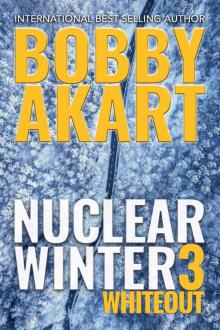 Nuclear Winter Whiteout
Nuclear Winter Whiteout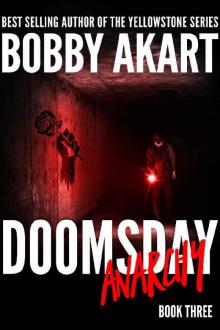 Doomsday Anarchy
Doomsday Anarchy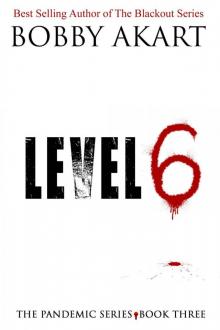 Pandemic: Level 6: A Post Apocalyptic Medical Thriller Fiction Series (The Pandemic Series Book 3)
Pandemic: Level 6: A Post Apocalyptic Medical Thriller Fiction Series (The Pandemic Series Book 3)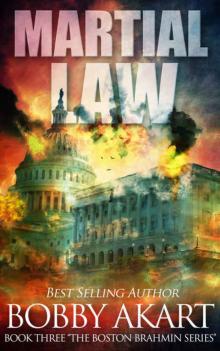 Martial Law
Martial Law Odessa Reborn: A Terrorism Thriller (Gunner Fox Book 4)
Odessa Reborn: A Terrorism Thriller (Gunner Fox Book 4)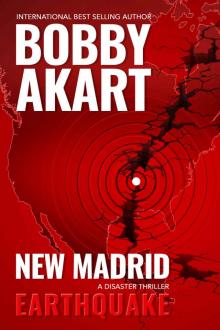 New Madrid Earthquake
New Madrid Earthquake Beyond Borders: Post Apocalyptic EMP Survival Fiction (The Lone Star Series Book 2)
Beyond Borders: Post Apocalyptic EMP Survival Fiction (The Lone Star Series Book 2)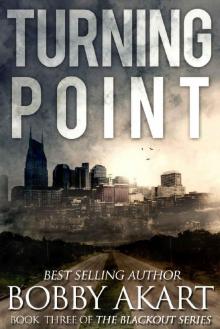 The Blackout Series (Book 3): Turning Point
The Blackout Series (Book 3): Turning Point Patriot's Farewell: A Political Thriller Fiction Series (Boston Brahmin Political Thrillers Book 7)
Patriot's Farewell: A Political Thriller Fiction Series (Boston Brahmin Political Thrillers Book 7)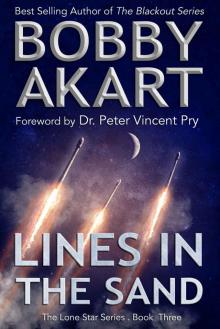 Lines in the Sand_Post Apocalyptic EMP Survival Fiction
Lines in the Sand_Post Apocalyptic EMP Survival Fiction The Mechanics: A Post-Apocalyptic Fiction Series
The Mechanics: A Post-Apocalyptic Fiction Series The Loyal Nine
The Loyal Nine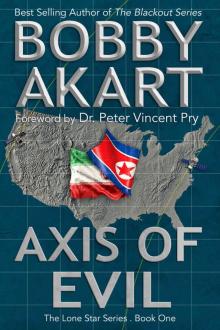 Axis of Evil
Axis of Evil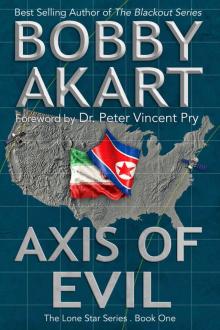 Axis of Evil: Post Apocalyptic EMP Survival Fiction (The Lone Star Series Book 1)
Axis of Evil: Post Apocalyptic EMP Survival Fiction (The Lone Star Series Book 1) Lines in the Sand: Post Apocalyptic EMP Survival Fiction (The Lone Star Series Book 3)
Lines in the Sand: Post Apocalyptic EMP Survival Fiction (The Lone Star Series Book 3)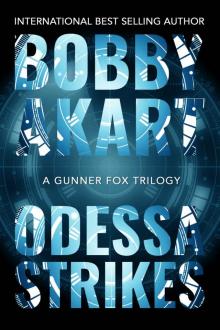 Odessa Strikes
Odessa Strikes The Blackout Series (Book 4): Shiloh Ranch
The Blackout Series (Book 4): Shiloh Ranch Hornet's Nest: A Post Apocalyptic EMP Survival Fiction Series (The Blackout Series Book 5)
Hornet's Nest: A Post Apocalyptic EMP Survival Fiction Series (The Blackout Series Book 5)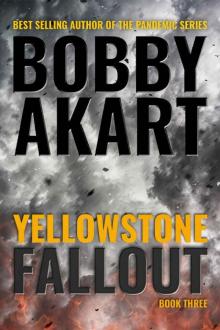 Yellowstone: Fallout: A Post-Apocalyptic Survival Thriller (The Yellowstone Series Book 3)
Yellowstone: Fallout: A Post-Apocalyptic Survival Thriller (The Yellowstone Series Book 3)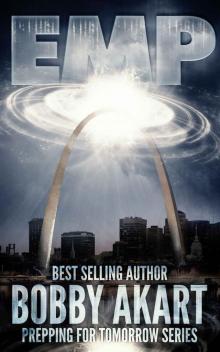 Electromagnetic Pulse
Electromagnetic Pulse Texas Strong: Post Apocalyptic EMP Survival Fiction (The Lone Star Series Book 4)
Texas Strong: Post Apocalyptic EMP Survival Fiction (The Lone Star Series Book 4)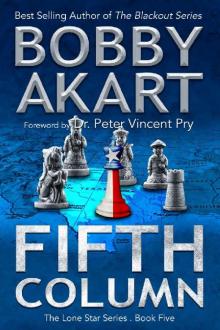 Fifth Column_Post Apocalyptic EMP Survival Fiction
Fifth Column_Post Apocalyptic EMP Survival Fiction Patriot's Farewell
Patriot's Farewell Texas Strong_Post Apocalyptic EMP Survival Fiction
Texas Strong_Post Apocalyptic EMP Survival Fiction Pandemic: The Innocents: A Post-Apocalyptic Medical Thriller Fiction Series (The Pandemic Series Book 2)
Pandemic: The Innocents: A Post-Apocalyptic Medical Thriller Fiction Series (The Pandemic Series Book 2) Shiloh Ranch: A Post Apocalyptic EMP Survival Fiction Series (The Blackout Series Book 4)
Shiloh Ranch: A Post Apocalyptic EMP Survival Fiction Series (The Blackout Series Book 4)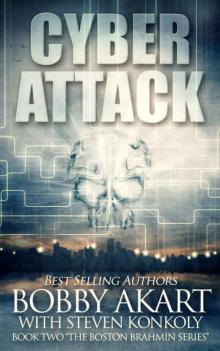 Cyber Attack
Cyber Attack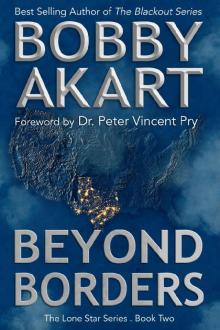 Beyond Borders
Beyond Borders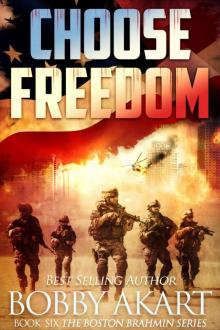 Choose Freedom: A Post-Apocalyptic Fiction Series (The Boston Brahmin Book 6)
Choose Freedom: A Post-Apocalyptic Fiction Series (The Boston Brahmin Book 6) False Flag
False Flag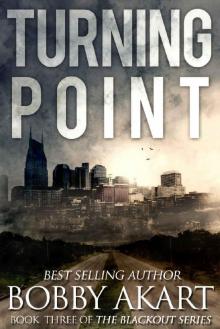 Turning Point: A Post Apocalyptic EMP Survival Fiction Series (The Blackout Series Book 3)
Turning Point: A Post Apocalyptic EMP Survival Fiction Series (The Blackout Series Book 3)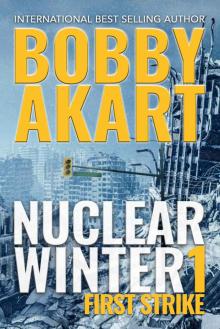 Nuclear Winter First Strike
Nuclear Winter First Strike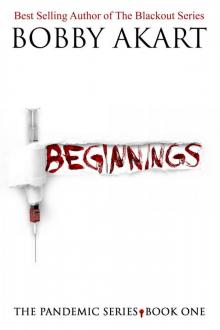 Pandemic: Beginnings: A Post-Apocalyptic Medical Thriller Fiction Series (The Pandemic Series Book 1)
Pandemic: Beginnings: A Post-Apocalyptic Medical Thriller Fiction Series (The Pandemic Series Book 1) Devil's Homecoming: A Post Apocalyptic EMP Survival Fiction Series (The Blackout Series Book 6)
Devil's Homecoming: A Post Apocalyptic EMP Survival Fiction Series (The Blackout Series Book 6) The Blackout Series (Book 6): Devil's Homecoming
The Blackout Series (Book 6): Devil's Homecoming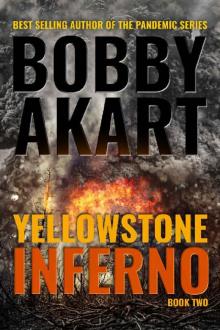 Yellowstone: Inferno: A Post-Apocalyptic Survival Thriller (The Yellowstone Series Book 2)
Yellowstone: Inferno: A Post-Apocalyptic Survival Thriller (The Yellowstone Series Book 2) Fifth Column: Post Apocalyptic EMP Survival Fiction (The Lone Star Series Book 5)
Fifth Column: Post Apocalyptic EMP Survival Fiction (The Lone Star Series Book 5) Yellowstone: Hellfire: A Post-Apocalyptic Survival Thriller (The Yellowstone Series Book 1)
Yellowstone: Hellfire: A Post-Apocalyptic Survival Thriller (The Yellowstone Series Book 1)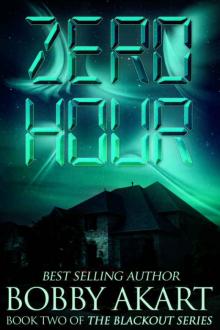 The Blackout Series (Book 2): Zero Hour
The Blackout Series (Book 2): Zero Hour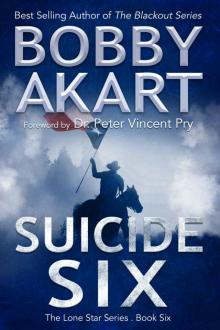 Suicide Six: Post Apocalyptic EMP Survival Fiction (The Lone Star Series Book 6)
Suicide Six: Post Apocalyptic EMP Survival Fiction (The Lone Star Series Book 6)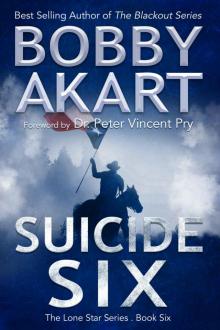 Suicide Six_Post Apocalyptic EMP Survival Fiction
Suicide Six_Post Apocalyptic EMP Survival Fiction Zero Hour: A Post-Apocalyptic EMP Survival Fiction Series (The Blackout Series Book 2)
Zero Hour: A Post-Apocalyptic EMP Survival Fiction Series (The Blackout Series Book 2)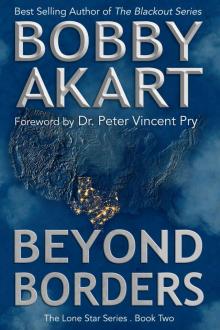 Beyond Borders_Post Apocalyptic EMP Survival Fiction
Beyond Borders_Post Apocalyptic EMP Survival Fiction Pandemic: Quietus: A Post-Apocalyptic Dystopian Fiction Series (The Pandemic Series Book 4)
Pandemic: Quietus: A Post-Apocalyptic Dystopian Fiction Series (The Pandemic Series Book 4)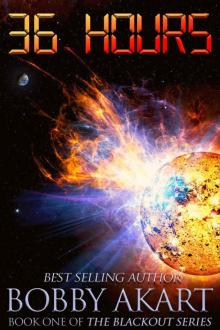 36 Hours: A Post-Apocalyptic EMP Survival Fiction Series
36 Hours: A Post-Apocalyptic EMP Survival Fiction Series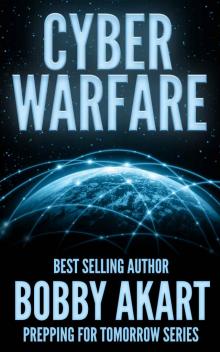 Cyber Warfare
Cyber Warfare